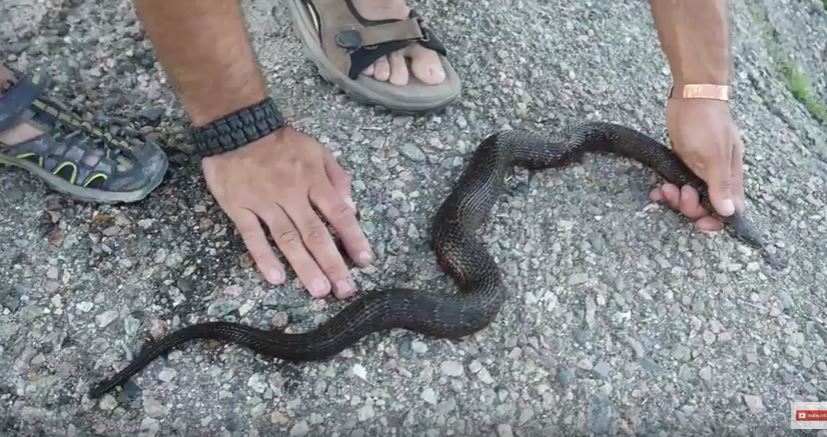The Water Moccasin Snake: appearance, biology, life cycle, habitat, diet, behavior

The water moccasin snake is what most people refer to as the cottonmouth snake. It has other variations such as cottonmouth moccasin, North American water moccasin and even highland water moccasin. The name is due to the bright lining that is white in color that displays a form of warning to its prey and predators as well.
Diet
These snakes ambush and search actively for prey. They also eat dead animals when they need nourishment. Their diet is mainly fish. They can also feed on bird eggs, snails, birds, toads, and small alligators. They may also eat smaller snakes, and this includes those within their species. The juveniles lure prey by moving their tail.
Appearance
The water moccasin snake can be as long as 30-48 inches, and occasionally you can find one that is up to 74 inches. Its back is black or dark olive while the belly is a paler shade. The younger cottonmouth has a back that is marked with bands that have dark borders while the centers are paler. The pattern fades away as the snake gets older. They have a pale snout and a dark vertical line that is by the nostril.
Behavior
The snakes are active during the night, but they do love to bask in the sun. They are mostly in water and that is why maintaining their body temperature is important for purposes of digestion. They can be aggressive but don’t attack unless you agitate them.
Habitat
These snakes are found mostly in the United States to the southeastern side, and this includes east to west Texas, and Virginia to Florida. They are semi-aquatic and therefore can be found near fields and water. They also inhabit drainage ditches, marshes, streams and swamps.
Life cycle
Their life span is not well known.
Biology
Water moccasin snakes are within the Squamata order, Viperidae Family and Agkistrodon piscivorus species/genus.
Water moccasins produce venom via glands that are near where the lower and upper jaws join. When it strikes, the fangs are inserted and then the muscles around the sacks contract. This squeezes the venom into the fangs and out into the prey.
Go back to the How to Get Rid of Snakes page or email us if you have any other questions about The Water Moccasin Snake: appearance, biology, life cycle, habitat, diet, behavior
About Us
We are the Pest Education Network, a non-profit organization that focuses on wildlife and pest removal education. Our approach utilizes Integrated Pest Management, a strategy advocating prevention and humane methods.


